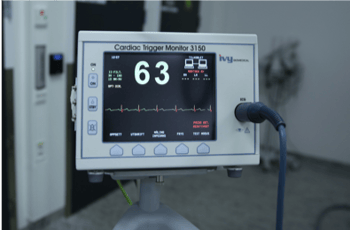What are Essential Outputs for Design Controls Compliance?
A core component of managing your medical device design is identifying and maintaining its essential outputs. However, there’s a lot of gray area when it comes to essential outputs, and the regulatory definitions aren’t always clear. In order to adequately address them in your development activities, figuring out what these outputs are is key.
Unpacking Some Quality System Regulation
According to FDA’s quality system definitions, design outputs are the results of your design efforts—both at the end of each design phase and in the final results of the overall design effort. To then define what essential outputs are, you need to look at FDA’s Design Controls regulation. As 21 CFR 820.30(d) states:
Design output procedures shall contain or make reference to acceptance criteria and shall ensure that those design outputs that are essential for the proper functioning of the device are identified.
Any essential output is related to the “proper functioning” of your device, and is a result of your design work at the end of each design phase and the overall design effort. While the regulation does not provide much more detail than this, some clarification is offered in guidance documents.
What Does the Guidance Say?
 In their Design Controls guidance, FDA lays out industry best practices for design controls, as well as what regulators expect of device manufacturers. The document includes a section on design outputs, further defining them as “work products” or deliverables of design activities identified in your design and development plan.
In their Design Controls guidance, FDA lays out industry best practices for design controls, as well as what regulators expect of device manufacturers. The document includes a section on design outputs, further defining them as “work products” or deliverables of design activities identified in your design and development plan.
The guidance states that each design output either defines, describes, or elaborates upon a design element and its function. Examples include, but are not limited to:
- Block diagrams or flow charts
- Product specifications
- Risk analysis results
- Verification & validation results
Work products are deemed design outputs if they are elements of your design implementation. However, this still leaves a gap in understanding—especially in relationship to proper functioning of your device.
Defining Proper Functioning
FDA does not explicitly define proper functioning, which can complicate scoping out your device’s essential outputs. In their inspection guides, FDA relates proper functions to critical ones, but offers no further clarification. They also neglect to discuss improper functioning.
 Despite this, a simple place to start with proper functioning and essential outputs is intended use. Using FDA’s device classification panels, you can find information relating to how your device is classified and its recognized intended use/identification within FDA regulation. From there, you can uncover what proper functioning of your device should look like.
Despite this, a simple place to start with proper functioning and essential outputs is intended use. Using FDA’s device classification panels, you can find information relating to how your device is classified and its recognized intended use/identification within FDA regulation. From there, you can uncover what proper functioning of your device should look like.
For example, an echocardiograph’s intended use is for generating images of cardiovascular structures by means of ultrasonic energy. Therefore, when determining proper functioning, you can identify two potential design inputs that would produce essential outputs:
- The device shall emit ultrasonic energy to produce images
- The device shall display and capture images of cardiovascular structures
These inputs relate to the function of the echocardiograph in line with its intended use. Therefore, any related outputs can be considered essential; in order for the device to function properly, those outputs must be in place.
Essential Outputs, Proper Functioning, and Safety & Effectiveness
Current FDA regulation and guidance appear to regard definitions for essential outputs and proper functioning as self-evident. As a result, understanding them and their place in your product development activities can become an obstacle. Starting at intended use is helpful, but it doesn’t get you all the way.
To fully understand what essential outputs and proper functioning look like, relating them back to safety and effectiveness is crucial. Any design output that relates to safe and effective use of your device can be thought of as essential for it to function properly.
Building on the echocardiograph example, outputs of the first design input identified could include assembly drawings of the component producing the ultrasonic energy, power system specifications, and risk analysis and identified mitigations to protect users/patients from effects of the ultrasound energy. All of these outputs contribute to either the proper functioning and effectiveness of the device, or its safety. They also align the device with its intended use. Therefore, you might think of them all as essential outputs.
How to Avoid Getting Overwhelmed by Essential Outputs
 Sometimes it can seem like every design output might be essential. This can easily overwhelm even the most seasoned teams, but there are a few ways to avoid this.
Sometimes it can seem like every design output might be essential. This can easily overwhelm even the most seasoned teams, but there are a few ways to avoid this.
Finding development activities that allow you to prioritize your design inputs and aid in identifying essential outputs is one possible solution. Systems engineering tools like Critical-to-Quality (CTQ) flowdown, for example, are a good start. CTQs help you manage the relationship between your requirements, product quality, and your user needs. By identifying requirements (inputs) most critical to your device’s quality, you can better manage the related outputs your team generates.
Another approach is to incorporate compliance software tools into your product development processes. Software with features for identifying essential inputs and outputs with capabilities for robust traceability can be highly effective in your compliance endeavors. As well, tools with risk management features built in and abilities for design controls integration are worth consideration.
Even in the absence of explicit definitions from regulatory and standards organizations, there are ways of understanding essential outputs. By understanding these outputs in the context of intended use, as well as safety and effectiveness, identifying them can be easier. And, when this understanding is paired with the right tools, robust management of essential outputs can be realized.
About Cognition Corporation
At Cognition, our goal is to provide medical device and pharmaceutical companies with collaborative solutions to the compliance problems they face every day, allowing the customer to focus on their products rather than the system used to create them. We know we are successful when our customers have seamlessly integrated a quality system, making day-to-day compliance effortless and freeing up resources to focus on product safety and efficacy.




